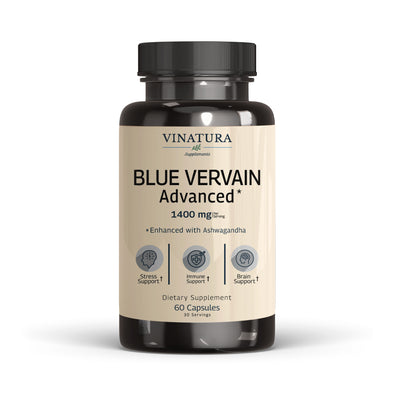
Does Spearmint Help With Headaches?
Headaches, a common problem for many, often lead individuals to seek natural remedies. Spearmint, known for its aromatic properties, has been traditionally used as a natural remedy.
This article explores the efficacy of Spearmint in relieving headaches, shedding light on its potential benefits and mechanisms of action.
Before exploring further, please read the disclaimer located at the end of this webpage.
Does Spearmint Help With Headaches?

Many individuals face headaches, often triggered by factors like hormonal changes, lack of sleep, and emotional stress, including persistent anxiety [4].
Spearmint is celebrated for its potential to alleviate these symptoms, thanks to its pain-relieving qualities and positive impact on mood and sleep quality, validated by both historical use and contemporary research [2].
How Does Spearmint Help With Headaches?
Improving Sleep Quality

When investigating headache causes, sleep emerges as a prominent factor [4]. The quality of sleep becomes closely linked to cognitive decline with age progression.
The mental benefits of Spearmint can be attributed to its rosmarinic acid content, which has been associated with improved cognitive functions like reasoning, attention, and planning [3].
Moreover, emotional elements such as stress and anxiety can impact sleep quality.
Spearmint, known for its gentle nature, is commonly taken daily for its positive effects on mental well-being and emotions, ultimately contributing to enhanced sleep quality.
Balancing Hormones
Hormonal imbalance is a less discussed yet significant trigger for headaches, particularly among women.
Spearmint's unique properties extend to its ability to regulate sex hormones, effectively decreasing the levels of free and total testosterone while simultaneously increasing the levels of luteinizing hormone (LH), follicle-stimulating hormone (FSH), and estradiol in the body [1].
This regulation of hormones can play a crucial role in mitigating the frequency and intensity of headaches, as it helps stabilize the factors that indirectly influence sleep patterns and stress, thereby reducing the likelihood of hormone-induced headaches.
Explore more: Does Spearmint Lower Testosterone?
How to Use Spearmint to Reduce Headaches?
Inhale Spearmint Leaf By Using Diffuser

One effective strategy to leverage the advantages of Spearmint for alleviating headaches involves the inhalation of Spearmint essential oil.
Either by employing a diffuser that emits the oil into the atmosphere or by adding a few drops onto a handkerchief or into a bowl of hot water for steam inhalation.
Selecting high-quality, pure spearmint essential oil is vital, ensuring it's 100% natural to avoid synthetic additives that might diminish its effects or lead to negative responses.
- When utilizing a diffuser, adhere to the instructions provided by the manufacturer, which usually involves incorporating 3-5 drops of Spearmint essential oil with water.
- For steam inhalation, place 2-3 drops of the oil into the steaming water, drape a towel over your head and deeply inhale for several minutes.
Inhaling Spearmint at the first signs of a headache or before bedtime can help relax and enhance sleep.
It should be used 2-3 times daily to avoid potential irritation or sensitization, especially for those with sensitive skin or respiratory problems.
Apply Spearmint to Your Skin

Applying spearmint essential oil directly to the skin, especially around the temples and forehead, can effectively relieve headaches.
In order to guarantee the safety and effectiveness of the application, it is important to mix spearmint essential oil with a carrier oil, such as coconut, almond, or jojoba oil, in a recommended ratio of one to two drops of essential oil per teaspoon of carrier oil.
For optimal results, selecting high-quality, therapeutic-grade spearmint essential oil alongside organic carrier oils is advised to maintain purity and minimize the risk of adverse skin reactions.
The method involves mixing the spearmint essential oil with the chosen carrier oil following the suggested ratio of 1:1 and gently massaging the mixture onto the temples and forehead in circular motions while being cautious to avoid eye and mucous membrane contact.
Implementing this technique at the onset of headache symptoms or before bedtime can significantly enhance relaxation and contribute to a more restful sleep, thus aiding in preventing headaches.
Should irritation or an allergic response manifest, usage should be halted immediately, and a healthcare provider should be consulted if necessary.
Explore more: Benefits Of Spearmint On Skin: How To Use Spearmint For Acne?
Ingest Spearmint to Reduce Headaches
Incorporating Spearmint into one's diet, whether by adding fresh leaves to salads, teas, and smoothies or spearmint capsules as dietary supplements, can contribute to headache relief and add a burst of flavor to meals.
While fresh leaves offer a natural approach, those looking for a more potent option might consider capsules, with a standard dosage of around 1000mg daily.
It's essential to follow exact dosage instructions, take capsules with food and water to aid absorption, and be mindful of potential side effects like digestive discomfort or allergic reactions, particularly in pregnant, breastfeeding, or hormone-sensitive individuals.
So, always follow a healthcare professional's advice to suit personal health conditions.
Additionally, consistency matters to leverage Spearmint's benefits fully; consuming it daily can improve mood and cognition, possibly preventing stress-induced headaches and enhancing sleep quality.
Alternative Ways to Help With Headaches

While Spearmint can provide gentle support for headaches, it is not the sole or specific treatment for chronic or severe headaches.
Individuals experiencing frequent or intense headaches should consider a broader range of treatment options tailored to their particular health needs and the severity of their symptoms.
Research has synthesized various headache relief methods, including pharmacological and non-pharmacological approaches.
- Medications such as sumatriptan subcutaneous injections and zolmitriptan nasal spray have been highlighted for their efficacy in managing acute migraine attacks [5].
- Additionally, non-pharmacological interventions like the administration of high-flow oxygen and suboccipital steroid injections have shown promising results for certain types of headaches [5].
Conclusion
Spearmint is a versatile, natural remedy offering a multi-faceted approach to mitigating headaches, from hormonal regulation to promoting relaxation.
Spearmint can significantly alleviate headaches, whether inhaled, applied topically, or ingested.
However, it's imperative to remember that it acts as a supportive measure rather than a definitive cure, emphasizing the importance of consulting healthcare professionals for persistent or severe headache symptoms.
This exploration of Spearmint, alongside conventional treatments, underscores the potential of integrating natural remedies into comprehensive headache management strategies.
Related Article:
Benefits Of Spearmint Leaf: Medical Properties & Side Effects
References
- [1] Jenkins, G., Etheridge, C. J., & Mason, P. (2022). Herbal Infusions and Women’s Health: A Review of Findings with a Focus on Human Studies on Specific Infusions with Studies on Extracts to Evaluate Mechanisms. Journal of Nursing and Women’s Health. https://www.gavinpublishers.com/article/view/herbal-infusions-and-womens-health-a-review-of-findings-with-a-focus-on-human-studies-on-specific-infusions-with-studies-on-extracts-to-evaluate-mechanisms
- [2] Nayak, P., Kumar, T., Joshi, N., & Gupta, A. (2020). Peppermint a medicinal herb and treasure of health: A review. ~ 1519 ~ Journal of Pharmacognosy and Phytochemistry, 9(3). https://doi.org/10.22271/phyto.2020.v9.i3y.11525
- [3] Nieman, K. M., Sanoshy, K. D., Bresciani, L., Schild, A. L., Kelley, K. M., Lawless, A. L., Ceddia, M. A., C. Maki, K., Del Rio, D., & Herrlinger, K. A. (2015). Tolerance, bioavailability, and potential cognitive health implications of a distinct aqueous spearmint extract. Functional Foods in Health and Disease, 5(5), 165. https://doi.org/10.31989/ffhd.v5i5.181
- [4] Pellegrino, A. B. W., Davis-Martin, R. E., Houle, T. T., Turner, D. P., & Smitherman, T. A. (2017). Perceived triggers of primary headache disorders: A meta-analysis. Cephalalgia, 38(6), 1188–1198. https://doi.org/10.1177/0333102417727535
- [5] Robbins, M. S., Starling, A. J., Pringsheim, T. M., Becker, W. J., & Schwedt, T. J. (2016). Treatment of Cluster Headache: The American Headache Society Evidence-Based Guidelines. Headache, 56(7), 1093–1106. https://doi.org/10.1111/head.12866
Author

Product Disclaimer
Including an ingredient or study does not evaluate, endorse, or recommend any Vinatura product or any third-party product. Some ingredients discussed may not be used in any Vinatura product.
The content of the articles has not been evaluated by the Food and Drug Administration (FDA) and is not intended to promote or endorse any specific product. Any products sold on this website are not intended to diagnose, treat, cure, or prevent any disease.
Opinions and Endorsements
Any claims, statements, or opinions expressed in the articles are those of the author(s) and do not necessarily reflect the views or opinions of the manufacturers of the dietary supplement products. The products sold on this website are separate from the content of the articles and are not directly endorsed or associated with the information presented here.
Liability Disclaimer
The author(s) of the articles, website, and manufacturers of the dietary supplement products do not assume any liability for any potential consequences arising from the use of the information provided in the articles. Ingredient effects, dosages, and safety vary by individual, formulation, and context; some ingredients interact with medications or may be unsuitable during pregnancy or lactation. It is recommended that individuals consult with a qualified healthcare professional before making any dietary or lifestyle changes, including the use of dietary supplements.
Product Usage
Please refer to the product labels and packaging for specific usage instructions and guidelines for the dietary supplement products sold on this website.
Customer Support
For any concerns or questions regarding the dietary supplement products, please contact our customer support team, who will be more than happy to assist you.





Leave a Comment
Be the first to comment.
What do you think?